You can view this information in two different ways. Our alphabetical list provides information on the status of each species within the harbour, finder dates and names, photos and favoured locations. By clicking on the Systematic List button you will be presented the full Poole Harbour systematic list which includes status of species, pending records and historical accounts.
To date, 333 species have occurred and have been accepted within the Birds of Poole Harbour boundaries. A further 11 distinct subspecies have also been seen. In addition, we have two species/subspecies which have been recorded, but are awaiting acceptance by the appropriate records panel.
There are a handful of historical records, for which there is currently insufficient information to allow their inclusion onto the Poole Harbour list, but are believed to be genuine records. They are listed at the end of the list.
Finally, there are a number of feral or escaped species that have been recorded within the Birds of Poole Harbour boundaries. They are included for completeness, but are not included on the Poole Harbour list.
We would be interested in hearing details of any species that do not appeared on this list.
The Birds of Poole Harbour systematic list is a PDF which you can view by clicking on the button below. It was last updated on December 2019.
Full Poole Harbour Systematic List
Corvus corax
Resident
Numbers have steadily grown over the last decade. Birds now nest at Arne, Corfe Castle, Brownsea, Ballard and Middlebere/Hartland area and their load ‘cronking’ calls can be heard overhead at many sites, especially in the west of the harbour.
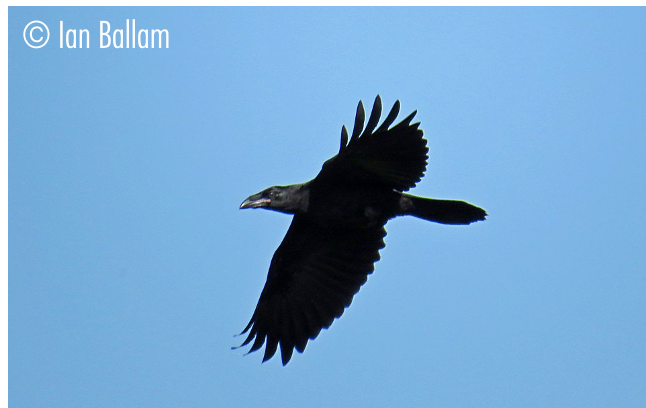
Alca torda
Passage Migrant & Winter Visitor
Like Guillemot, small numbers occur during the winter but tend to stay near the harbour mouth and don’t tend to venture into the inner harbour. A maximum count of 248 Razorbills flew past Old Harry on 24th January 2008, and on 26th there were 120 Razorbills sitting on the water with twelve Guillemot out in Poole Bay.
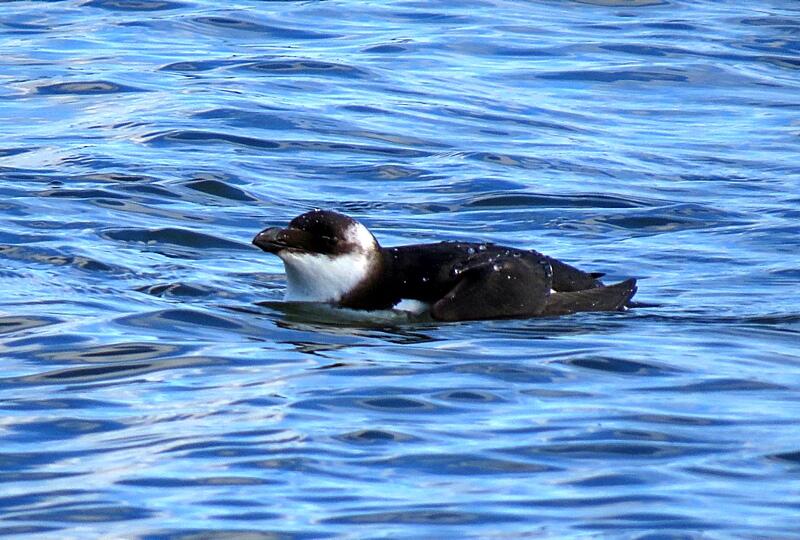
Milvus milvus
Regular spring passage migrant and possibly now resident
Red Kite has seen a dramatic change in status in Dorset and Poole Harbour over the last 5 years (as of 2020) with populations ever growing in the north of the country this species has become a much more regular sight in the harbour with at least 20-30 sightings each year. Red Kite were likely a common bird across Dorset and southern Britain several hundred years ago, but relentless persecution saw them become extinct across much of their range. Since their eradication Poole Harbour didn’t see it’s first record until September 1922 with 1 seen over Wareham. From then sightings were sporadic with the next not occurring until September 1966 and then August 1987. Then, in the early 1990’s, as reintroduction programs began in the UK sightings in the harbour began to increase.
1 at Arne on 3rd April 1990
1 wing-tagged over Lytchett Bay on 1st November 1992
1 past Corfe Castle and over Swineham on 23rd March 1995
1 over Lytchett Bay flying high over Rockley on 28th April 1996
1 at Lytchett Bay on 26th August 1997
1 over Corfe Castle on 23rd March 1999
1 at Arne on 16th October and on 23rd December 1999
By the early 2000’s, British and Scottish populations began to expand, as did the original Welsh population. This meant sightings in the harbour continued to increase, and by spring 2015 a new and fascinating spectacle was beginning to manifest each spring where 2nd cal year (non-breeding) Red Kite undertook a SW spring migration thorough Dorset and down towards Cornwall with Poole Harbour seeing it’s fair share in the latter part of April/early May each spring. Then, on May 10th 2020 an exceptional migration took place through Dorset and the harbour. It started at Lytchett Bay when at around 9am the first one was logged heading SSW, quickly followed by another. Within an hour 15 had been logged and by early afternoon 23. At the same time 8 were logged over Oakdale, 11 over Poole Hospital, 13 over Canford Heath, 14 over Lytchett Matravers, counts of 3-5 over Sandford, Wareham, Studland, 26 over Langton Matravers and a whopping 63 past Westbourne. They were literally everywhere with the peak certainly seeming to be between 11am and 12pm, but it suddenly stopped at around 2pm. Its hard to estimate an exact count but it’s safe to assume that several hundred must have moved through the area that morning which was just fantastic and an experience many who saw ‘flocks’ of Red Kite that day will never forget.
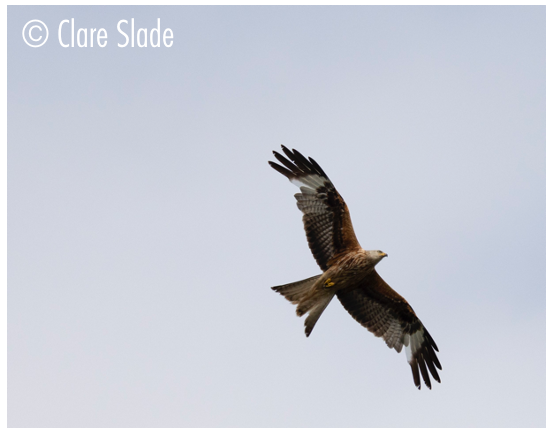
Lanius collurio
Vagrant
Until the 1950’s this species could be found on most heathlands of east Dorset… but a decline started in 1951 and was complete by 1962. Now a rare vagrant mainly in spring and Autumn.
1 on 19th May 1961 at Holton Heath
1 on 27th Sept 1962 at Arne
1 on 11th Sept 1963 at Arne
1 male calling on 21st June 1975 on Studland Heath
1 on 31st October 1984 at East Stoke
1 on 5th June 1988 at Lytchett Bay (GP Green)
1 female on 6th July 2012 at Holton Lee (P.Morton et al)
1 on 11th September 2015 at Greenland’s Farm (SW.Smith)
1 female on 24th May 2016 Hartland Moor (R&D.Dyer et al)
1 at Arne 5th July 2017
1 on 24th August on Hartland Moor 2017
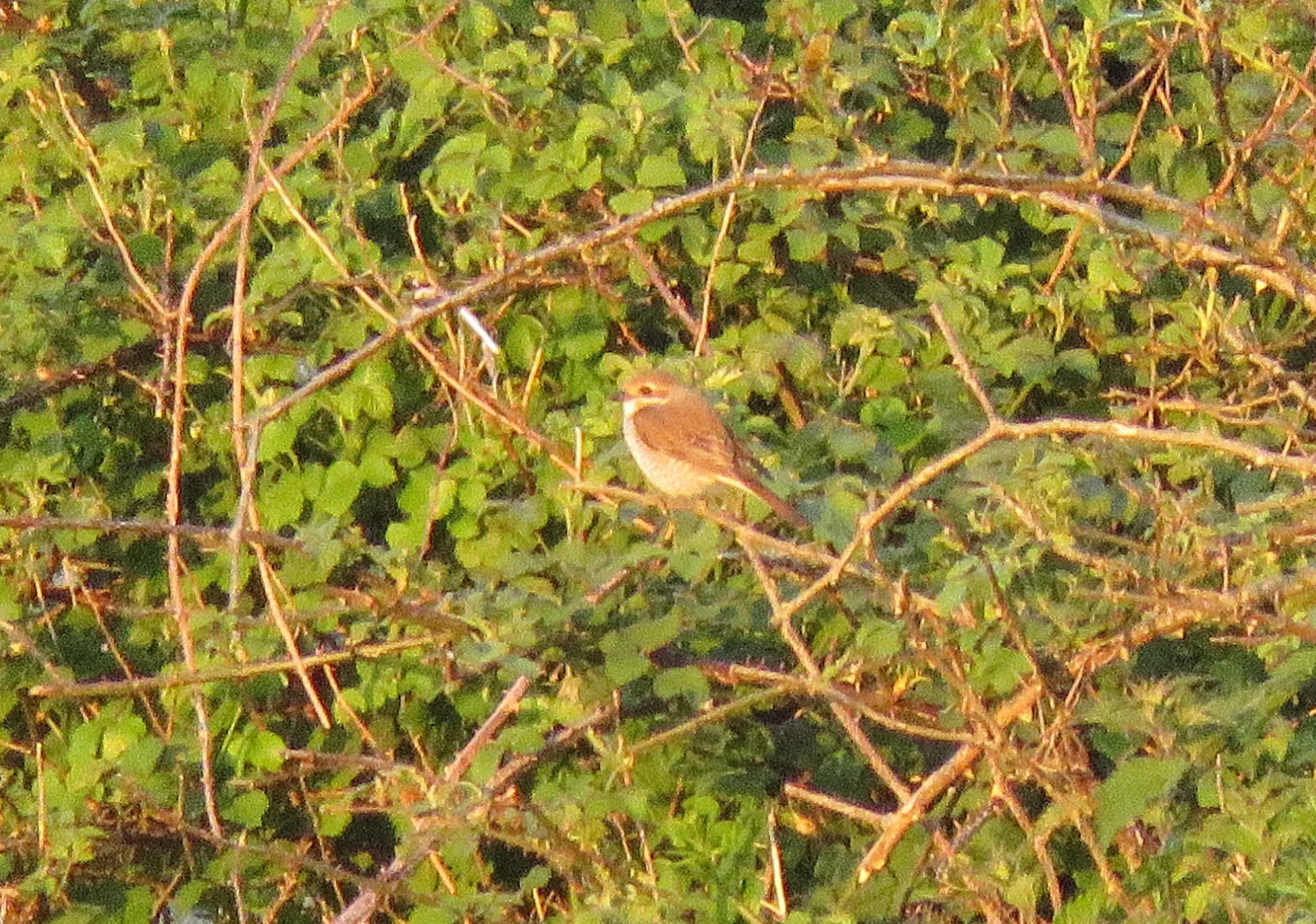
Branta ruficollis
Vagrant
Either an extremely rare vagrant, or feral wanderer for escaped populations. There is still debate as to whether any/many Dorset or UK records relate to true wild birds but with many records consisting of birds associating with wild Brent Geese flocks and acting/behaving in a truly wild way it seems 100% wild Red-breasted Goose are actually more regular than people may assume.
1 (1st W) on 12th November 2003 at Shell Bay (C. Cottrell)
1 (Adult) 18th November 2006 – 25th January 2007. It was found at Middlebere but then frequented various sites. (T.Hill et al)
1 (Adult) 24th March at Middlebere and 30th March 2014 at Fitzworth (K.E.Lane et al)
Mergus serrator
Winter Visitor
Dorset hosts the largest wintering population outside of Scotland with The Fleet and Weymouth now holding slightly more than Poole Harbour. Large rafts of these ‘punk rockers’ can be seen loafing out on any body of water in the harbour. A great way to see them is from a bird boat winter tour. A large evening roost can be seen in-between Furzey Island and Round Island mixing with Goldeneye and Great Crested Grebe. Brands Bay, Bramble Bush Bay and in the outer bays of the harbour will all see reasonable numbers during the winter.
The maximum count is of 535 in 16th December 1979, though this has reduced in recent years. The harbour WEBS mean peak 2011 – 2016 is 240, max 299 in 14/15. An interesting trait that RBM previously was their habit of flying in and out of the harbour at dawn and dusk, possibly an inherited survival technique from ancestors who were shot at when wildfowling was rife 100 years ago. Thankfully the harbour is a much safer place these days and many birds now roost near Furzey Island. Sadly from the perspective of a unique birding spectacle the ‘fly-out’ is now a shadow of what it was 25 years ago.
Poole harbour has the largest wintering population outside of Scotland with an average of 405 and is a nationally important wintering area. It is the third most important estuary in the British Isles for this species with 60% of the counties birds. The maximum count is of 535 in 16th December 1979. During the winter you can find birds on any open water and occasionally in Poole Park.
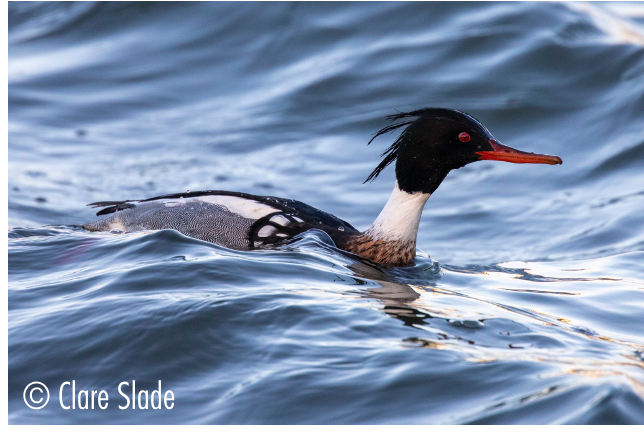
Netta rufina
Rare Visitor
The largest feral population in the country exists at Cotswold Water Park in Wiltshire and this may certainly account for many of the records in the last 25 years although sightings have dropped off considerately over the last decade. Little Sea and Swineham GP have seen the most recent records. First recorded in 1950 at Little Sea where a male was present from 24th-25th December and again 15th Jan 1951.
1 on 24th – 25th Dec 1950 at Little Sea where a male was present and again 15th Jan 1951.
1 on several dates in April also 30th – 31st May 1963 on Brownsea
A male on 14th Dec 1963 at Studland
1 27th to 31st Dec 1982 at Little Sea
1 on the 10th Nov 1984 in Holes Bay
1 from 9th Mar to 12th May 1989 at moved between Brownsea and Luscombe Valley.
A drake from 11th – 20th Nov in Poole Park, moved to Hatch Pond on 28th Dec 1989 was thought to be the same bird as above.
1 in late Dec 1993 at Little Sea
1 on 1st Jan 1997 at Little Sea
A drake on 23rd Mar 2006 at Little Sea
Up to 6 between 9th – 23rd Jan 2010 at Brands Bay/Little Sea during very harsh weather
A drake between 28th Nov 2010 and 23rd Apr 2011 at Little Sea (present on and off)
A drake on 10 dates between 24th Apr and 19th Jul 2011 at Swineham GP (presumed to be the same as above)
A drake from 8th – 13th Nov 2012 at Swineham GP
1 on 25th Sep 2013 at Creekmoor Ponds
Falco vespertinus
Vagrant
A vagrant to the harbour from SE Europe. Mainly in late spring. There were 37 Dorset records up to end 2015 but it has now increased considerably with records each year in Dorset from 2013 to 2018. Poole Harbour has 7 records including an amazing account of a pair that stayed for over a week in 1989.
A pair 4th – 12th June 1989 on Hartland Moor (T.Russell et al). A male and female were watched together with up to 12 Hobby, feeding on large numbers of newly hatched insects. The Hobby numbers declined after the first few days, and the female was last seen on the 12th. The warden at the time decided that the news should not be released and that the record shouldn’t even be submitted to the British Birds Rarities Committee. A photograph of the female sitting on a post was taken. With the passing of the other observers we are grateful that Tasie has now been able to reveal the full story of this amazing event.
8 records ranging from 13th May to 6th August.
1 shot on 19th May 1904 near Wareham
1 on 27th Jul 1963 ‘was observed at close range near Wareham’ (H.G.& W.B.Alexander)
A male on 6th Aug 1978 at Arne (D.Bishop, M.Rowbottom, C.Unsworth)
A male on 13th, 16th and 24th May 1987 at Studland (S.J.Morrison, G.Dutson et al)
A female on 3rd – 4th Jun 1995 on Ballard Down (E.S Brodie, T.Elborn et al)
A female on 20th – 26th May 2015 Wareham Water Meadows – a popular and widely twitched bird.
1 at Morden Bog, 2cy female present around the Old Decoy Pond area from 4th to 8th May 2016 (BJ Hill et al).
1 Morden Bog on 18th Jun 2017 (ID Ballam, A Brown et al)
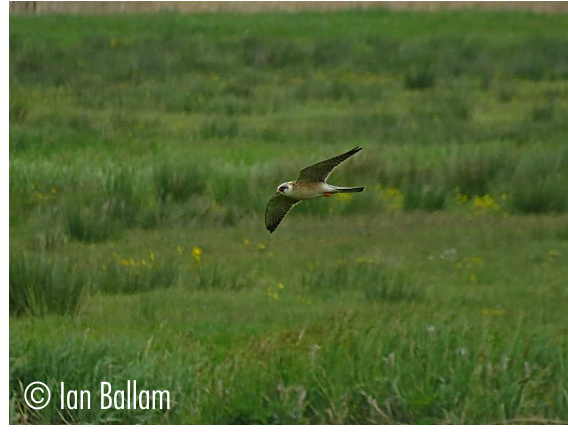
Alectoris rufa
Scarce Resident
Not an easy bird to see in the harbour now, with occasional birds up on Ballard Down and recent sightings at Arne, Soldiers Road, Norden and Ridge. Populations just outside the recording area will no doubt find their way to the various farms and scrubland in the west of the harbour. Still releasesd en mass each autumn across the UK but for some reason not locally within the harbour or surrounding area. Recent releases have been at Norden and Rempstone. They Bred in 1963, then bred behind Kerry Foods in 1995. They used to be recorded annually on all the heaths and farmland fringes in the harbour.
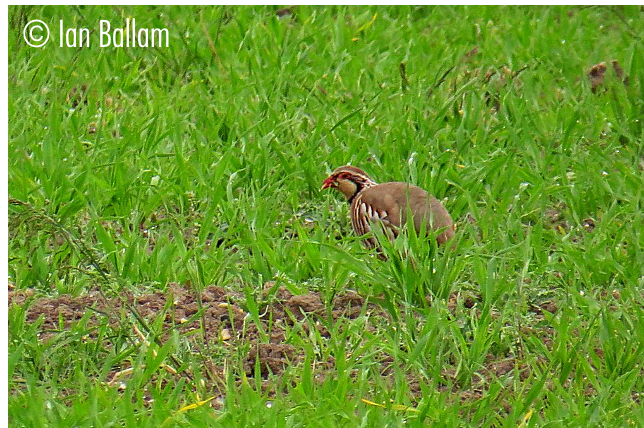
Podiceps grisegena
Scarce Winter Visitor
The rarest of the winter grebes, but at least one is seen each winter either out in Shell Bay or Studland Bay, or just off Pilots Point, inside the harbour mouth or off the southern shores of Brownsea. Amazingly there was a maximum of 18 in Poole Bay during December 1988 and again 18 off Branksome Chine on the unusually late date of 15th April 1996. The earliest arrival was on the 22nd October 1999 at Arne with returning summer plumage birds passing through in April, the latest birds lingering until the 17 April 1987 in Shell Bay. Recently Shell Bay and the Studland Beaches seem the best places to look but records of more than one per winter are now sadly very scarce.
Recent Records
2014
Sandbanks – 1 on Dec 18th
2015
Studland Bay – 1 to 2 present from 1st – 29th January and 1 from November 19th – 26th December
2016
Poole Harbour Singles on 1st, 3rd & 24th Jan at various sites but probably relate to the same individual.
2018
Poole Harbour First winter period record of singles on several days from 6th Jan to 25th Feb at various sites. During the second winter period, 2 birds were present on 10th Dec with singles also recorded on several dates between 4th & 28th Dec.
2019
Bournemouth 1 off beach on 6th Feb.
Branksome Chine 1 on 20th Jan.
Poole Harbour 1 between Brownsea and Long Islands and a second (possibly same) bird nearer the harbour entrance on 15th Nov.
Shell Bay/Studland 2 on 14th Jan, 1 on 20th Jan.
Swineham GPs 1 present from 23rd Mar-7th Apr, and from 22nd-26th Apr.
2020
Branksome Chine 4 offshore on 18th Dec.
Poole Harbour 1 off Brownsea Island and Arne RSPB on 19th & 20th Feb and 1 in Brand’s Bay on 25th Oct.
Shell and Studland Bays 1 between 15th and 21st Dec.
2021
Harbour mouth, 1 on 14th Nov and in Brands Bay 14th and 15th Nov.
Jerry’s Point, 1 from 11th – 15th Dec
Shell Bay, 1 from 15th – 26th Nov and 9th – 16th Dec
2022
1 in harbour entrance on Jan 3rd
1 off Jerry’s Point on Jan 7th
1 in Shell Bay Jan 9th
1 off Ham Common 29th Oct and the same individual off Shipstal Point, RSPB Arne 27th Dec
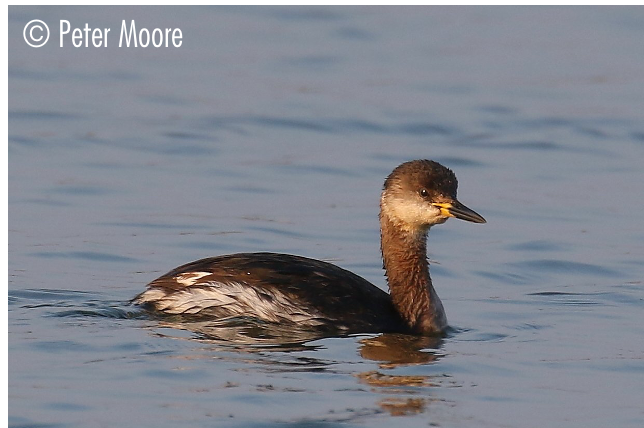
Phalaropus lobatus
Vagrant
A vagrant to the harbour. Typically there around 30 non-breeding records of this attractive wader in the UK each year but it is rare in Dorset.There are only 5 Poole Harbour records including an amazing occurrence on Arne Moors during Sept 2017 when one shared a small pool with a Grey Phalarope for several days.
1 adult in summer plumage off Shipstal Point was watched for over an hour in May 1962 (A. Bromby).
A juv from 17th-19th Aug 1989 on Brownsea.
A juv on 26th Aug 2011 on Brownsea (ES Brodie et al)
A juv on 25th Aug 2017, 300m off Shipstal Beach, Arne seen at close quarters by a public Osprey bird boat (S. Emmerson et al)
A juv from 21st-26th Sept 2017 on small pool in NW corner of Arne Moors (J. MItchell et al) sharing a pool with a Grey Phalarope – one of the all-time harbour “best birding experiences”.
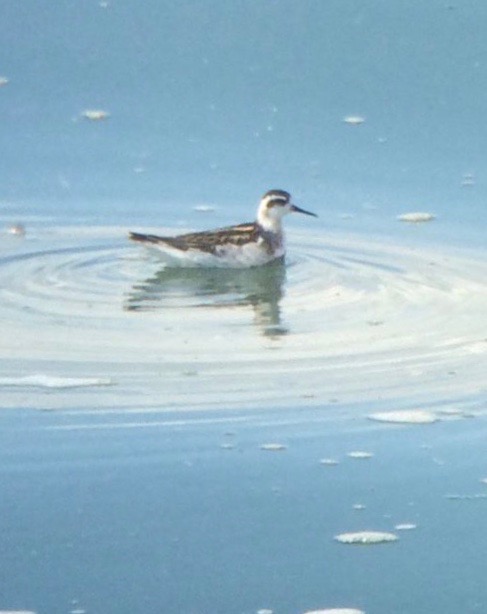
Cecropis daurica
Vagrant
With only 4 records, a lingering bird would attract a good crowd. How long will we have to wait?
1 on 19th April 1987 at Arne (W Fletcher, S Roantree)
1 on 4th April 2011 sat on telephone wires at Bestwall, Wareham (P.Morton et al) photo, later over Swineham GP
1 on 3rd May 2002 at Bushey
1 on 14th Sep 2013 at Middlebere
Gavia stellata
Passage Migrant & Winter Visitor
In winter most regularly seen in Poole Bay and Studland Bay where numbers are generally between 1-4 birds. Higher counts can occur during periods of bad weather as they move around to find more sheltered areas. In the winter, best places to look are out in Poole Bay, Shell Bay and Studland Bay with occasional inner harbour records at places like Brands Bay and even Holes Bay and Lytchett Bay. Passage birds move through Poole Bay in an easterly direction in the spring and westerly in Autumn and on days of strong passage up to 20 birds can be logged. George Green in Birds of Dorset does mention mid winter movements and highly mobile winter birds.
The record maximum is 34 in Poole Bay on Christmas Day 1988, with the previous record being twelve counted flying in to the harbour, again on Christmas day 1984.
Unseasonal records include – 1 in Poole Harbour on 26th June 1961, 1 on 6th July 1978 Shell bay and 1 on 7th July 1988.
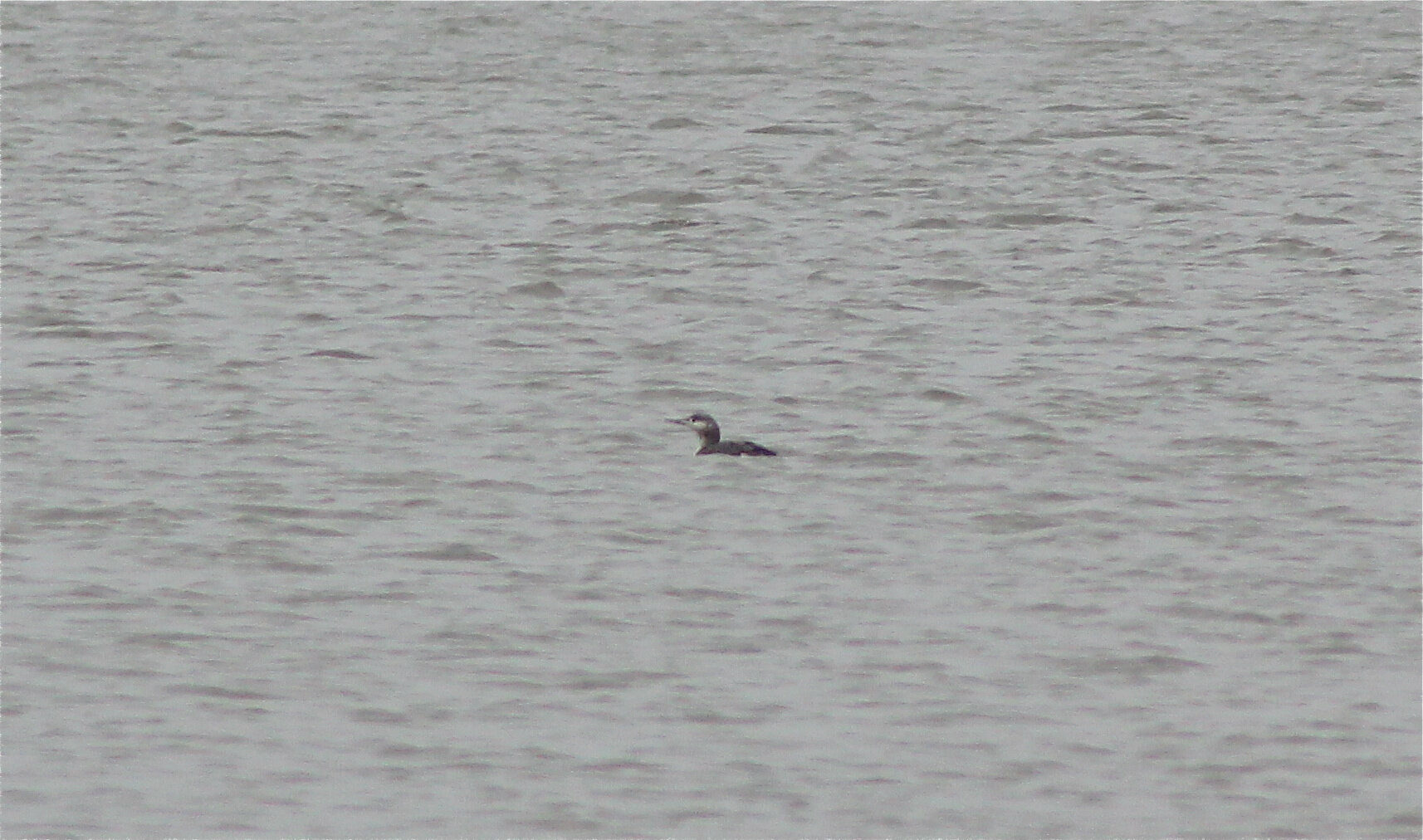
Tringa totanus
Resident
Often called the ‘Warden of the Marsh’ due to their habit of patrolling every creek, channel and mudlflat in the harbour. Winter counts rise to almost 1000 with pretty much the whole harbour seeing decent sized flocks. The wintering birds in the harbour are British, Icelandic and Scandinavian breeding birds, however breeding in the harbour seems to have declined, meaning a small decline in winter numbers.
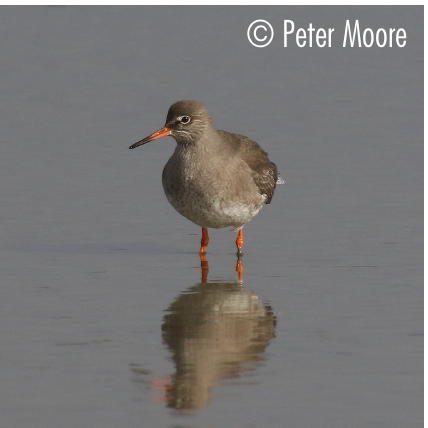
Phoenicurus phoenicurus
Summer Visitor & Passage Migrant
Seen more so in the autumn with the Middlebere approach track, Sunnyside Farm, Slepe heath, Soldiers Road, Hartland and Arne peninsular reporting good numbers, but can turn up anywhere from early August to late September. Spring passage less obvious but Ballard and Greenland’s Farm being worthy site. Recent breeding attempts have been at recorded at Slepe Copse and Arne.
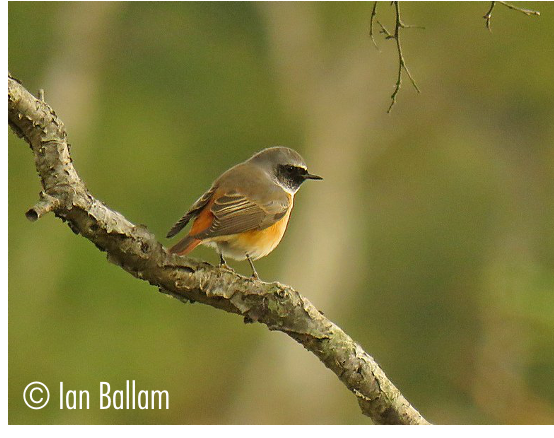
Turdus iliacus
Passage Migrant & Winter Visitor
Redwing migrate at night and birds can be heard arriving from the north as they migrate from mid October onwards. Listen out for their high pitch ‘zeeeee’ by standing out in your garden at night. Lytchett Bay, Soldiers Road, Upton Country Park, Arne, Bestwall, Upton Heath, anywhere with large fields or fruit bearing bushes for them to feed on are good places to look. Cold weather movements can occur with South Haven at dawn being a great place to witness large movements. A typical cold weather movement can consist of 6000 -10,000 birds! A recent study has shown that at the end of October over 3000 birds can pass over Poole Town centre in a single night.
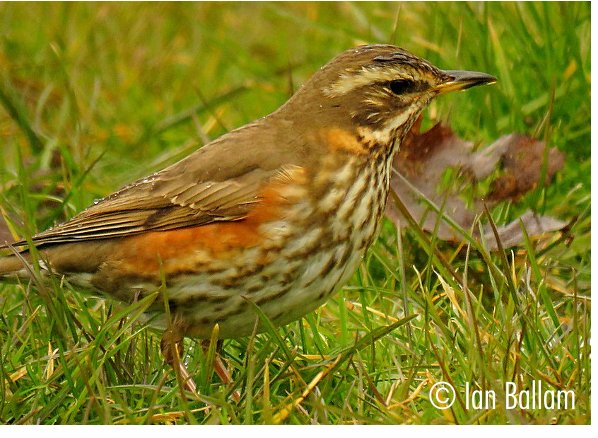
Emberiza calandra
Resident
Found anywhere with decent thick reed bed habitat such as Swineham/Bestwall, Lytchett Bay, Arne/Middlebere also found on Brownsea, Hatch Pond and Upton Country Park. Small winter flocks of around 10-15 birds can occur in open reed bed areas around the harbour with past maximum counts of up to 300 being recorded. They are also autumn passage migrants and can be seen/heard mixing in with Goldfinch, Siskin and Linnet on October mornings passing coastal watch points like Ballard and South Haven.
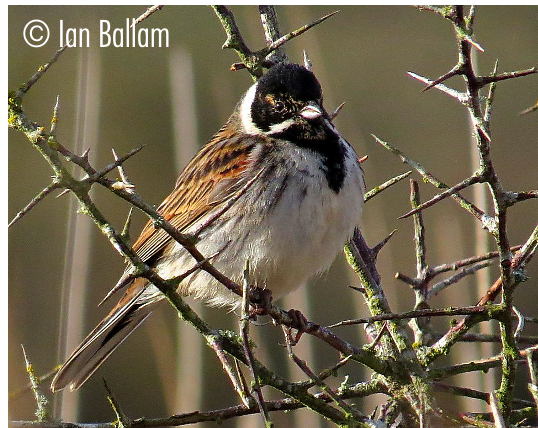
Acrocephalus scirpaceus
Summer Visitor & Passage Migrant
Breeds commonly in all suitable reed beds. Surveys in the eighties revealed 200 pairs at Keysworth in 1986, 60 pairs at Lytchett Bay in 1984 and 30 pairs at Arne in 1986. It is possible that damage to the reed beds caused by grazing Sika Deer may have a small impact on numbers but a survey at Lytchett Bay in 2011 found 84 singing males. This would suggest that the species is still doing well.
Autumn passage, like Sedge Warbler, is rife through Poole Harbour reed beds, though distinguishing the scale of this due to the presence of young local birds is very difficult.
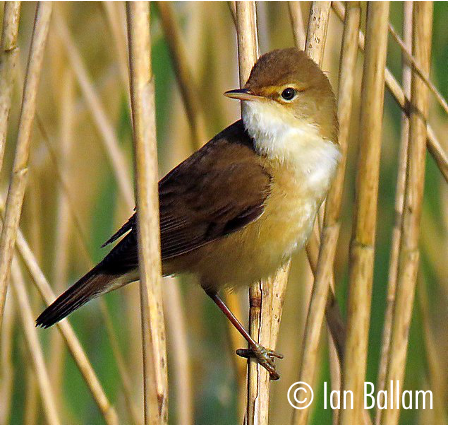
Anthus richardi
Vagrant
Annual but very scarce migrant to Dorset, mainly in autumn, but it remains an extreme vagrant to the harbour
1 on 10th October 2001 Pilot Point, Studland (Mk Constantine)
1 on 24th April 2014 at Greenlands Farm, Studland (G.Armstrong et al) photo and sound recording
Turdus torquatus
Scarce Passage Migrant
The most reliable site is on Ballard Down just north of Glebelands on autumn migration in October. Birds also annually reported from the Greenlands Farm area at Studland. Arne, Hartland, Slepe Heath, Lytchett Bay and Ham Common all hold recent records, but unfortunately it’s not an easy bird to catch up with in the field. Spring passage is less evident with birds sporadically turning up at places with suitable habitat. The autumn of 2016 saw a huge number passing through the UK and Ring ouzel were even turning up at urban sites in Poole including the Fleets Corner PC World Drain!
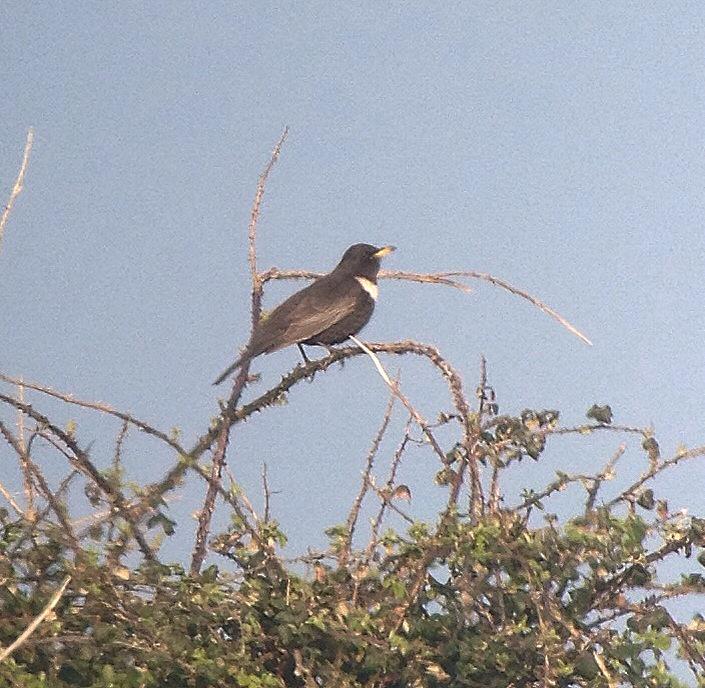
Larus delawarensis
Rare Visitor
Ring-billed Gulls are more a feat of identification than detection. Birders checking Common Gulls for the identification criteria is probably more responsible for their distribution than the reality of their presence. They have become rarer in recent years but almost certainly many go un-found in amongst the many thousands of Common Gull that roost in the Wareham Channel each day during the winter
1 Ad on 25th Jan 1984 at Poole Park (P Harvey)
1 Ad on 3rd – 6th Apr at Holes Bay (ES Brodie et al)
1 Ad on 6th and 9th Apr 1994 at Lytchett Bay (S Robson et al, same bird as above)
1 2nd W on 16th Jan 1995 at Poole Park (S Robson)
1 2nd S on 19th – 20th Apr 1996 at Lytchett Bay (S Robson)
1 2nd W on 19th – 20th Sep 1997 at Lytchett Bay (S Robson, JA Lidster, T Elborn)
1 1st W on 29th Dec 1997 at Little Sea (MkConstantine, JA Lidster)
1 2nd W New Years Day 1998 at Branksome Chine (N Symes)
1 Ad on 21st Mar 1999 at Lytchett Bay (S Robson, T Elborn)
1 Ad on 21st Feb 2000 at Swineham (GJ Armstrong)
1 2nd W on 23rd Feb 2002 at Lytchett Bay (S Robson, SF Smith)
1 Ad on 5th – 15th Mar 2002 at Corfe Mullen Tip (JA Lidster et al)
1 Ad on 3rd Feb – 6th Mar 2003 at Corfe Mullen Tip (JA Lidster et al)
2, a 1st winter and an Adult on 16th Mar 2003, with 1st W still present next day, at Lytchett Bay (GJ Armstrong, S Robson, I Prophet)
1 2nd W on 30th Jul 2005 at Baiter, 2nd Jul record in Dorset (RJ Taylor)
1 Ad on 16th Nov 2006 at Swineham GP (D Liley)
1 Ad on 28th Feb 2007 in the Wareham Channel (JA Lidster)
1 Ad on 20th Mar 2008 at Lytchett Bay (S Robson)
1 Ad on 27th Mar 2008 at Swineham Point (D Chown)
1 Ad on 20th Feb 2009 at Swineham Point (GJ Armstrong)
1 Ad on 8th Mar 2009 at Lytchett Bay (S Robson et al)
1 1stW on 5th Feb – 28th Mar 2011 at Poole Park (L Fuller et al)
1 Ad on 17th Dec 2013 at Poole Harbour entrance (L. Chappell)
1st W on 17th Dec 2013 at Swineham GP (MJ Lawson)
Ad on 30th Nov 2014 at Swineham Point (MJ Lawson)
1 Ad on 26th & 27th Feb 2017 in Lytchett Bay (S Robson et al)
1 Ad on 28th Feb 2017 in Lytchett Bay (different to previous days bird) (N Hopper, S Robson)
1 Ad on 12th March 2017 in Wareham Channel (J Potter)
1 Adult in the Lytchett Bay pre-roost on 26th & 27th Dec 2020 (S Robson et al). This individual is suggested to be the same as that present in most of the last few winters in Hampshire, and was noted back there in early 2021
Aythya collaris
Vagrant
A very rare duck with only 4 Poole Harbour records. However always checking open fresh water bodies such as Swineham, Little Sea, Hatch Pond and Poole Park Lake you never know when the next one might be found.
1 male 7th Oct 1989 on Little Sea, Studland (R.S. & V Papps et al) then presumed same visited Poole Park on 20th Nov – 13th Dec.
1 male 10th Nov – 14th Dec 1990 at Poole Park (J.V.Bale, G.P. Green et al) then Little Sea, Studland 16th -17th Dec, before returning to Poole Park 18th – 30th Dec. All presumed to be returning 1989 bird.
1 male 11th Nov – 31st Dec 1995 at Poole Park (E.S.Brodie et al). This bird also strayed to Little Sea, Studland on several dates. It became more settled here in the early part of 1996 when it was present from 13th Jan – 11th Feb. Interestingly the possibility of it being the same bird as 1989 -1990 bird was not ruled out. A male had spent the intervening winters at Timsbury GP in Hampshire.
1 female 7th – 21st Dec 2008 at Swineham GP (K.E.Lane et al) then presumed same at Little Sea, Studland 23rd Feb – 4th Mar, before returning to Swineham GP from 20th Mar – 3rd May 2009.
1 female at Swineham GP on 9th-25th Feb 2021 with 2 on 13th Feb 2021. (T Warrick et al)
1 female at Swineham GP on 30th April 2021 (T Warrick et al)
Psittacula krameri
Feral Resident
Introduced into a Studland garden in 1990, the owner then moved and the birds have supported themselves, with a little help at local bird feeders. Most years birds are seen entering and leaving nest holes bred in the paddocks opposite the Banks Arms at Studland village. Max 12 in 1996 – 8 in 1998. Breeding is restricted to the Studland area where numbers have risen and fallen over the last 20 years. Nowerdays only three or four can now be seen around the Bank’s Arms area but breeding was likely to have taken place in 2010.
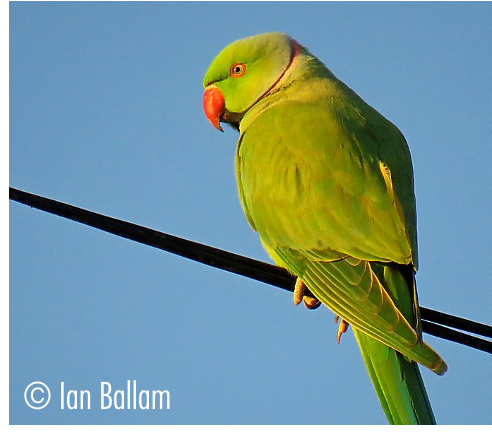
Charadrius hiaticula
Passage Migrant & Winter Visitor
Used to be a scarce breeder, but now only occurs in small numbers on passage and in winter. Very rarely autumn passage can actually bring sizeable counts on the Brownsea Lagoon but they don’t stay for long. The shoreline at Shell Bay and Studland beach before the dogs arrive can be good for Ringed Plover, along with the Hamworthy and Baiter shorelines. Other than those sites the Brownsea Lagoon and Lytchett Fields during migration season are the only other hotspot .In winter a flock of 10-20 spend their days on the sea wall of Fishermans Dock, Poole Quay during the high tide before then heading to feed on Baiter Beach on the low tide.
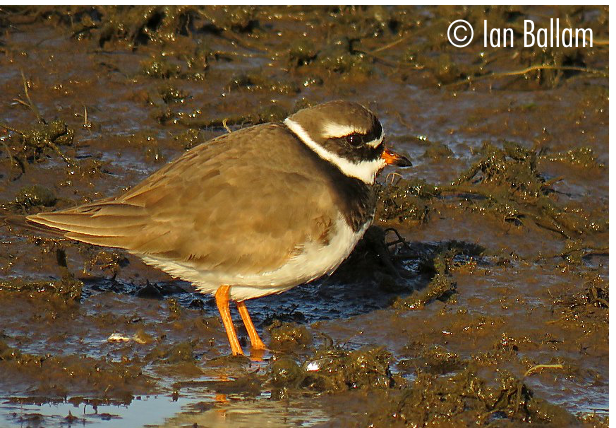
Erithacus rubecula
Resident
An abundant species throughout the harbour found in any woodland, garden, scrub, heathland habitat. Numbers rise in the winter with birds moving from the north of the UK, plus some continental birds arrive in October.
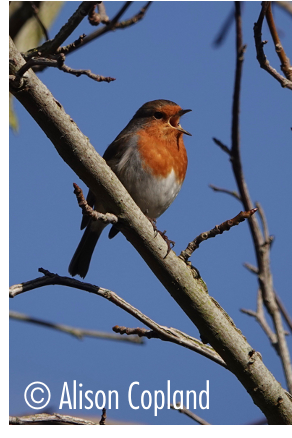
Anthus petrosus
Resident
Breeds on cliffs around Ballard Down where it can be seen throughout the year in small numbers. Recorded widely during winter on the saltings all around the harbour, sometimes in large numbers e.g. 60 at Swineham on 26th Nov 1989, 50 at Lytchett Bay on 18th Dec 2005. In spring when these birds start to attain summer plumage it’s apparent that many, if not all, are in fact Scandinavian Rock Pipits e.g. 8 in spring plumage were seen at Lytchett Bay on 22nd Feb 2016. Ringing at Lytchett Bay has now gone some way to confirming this belief with two birds being trapped, one with a Norwegian ring and the other with a Belgian ring (ringed on migration from Scandinavia to the UK).
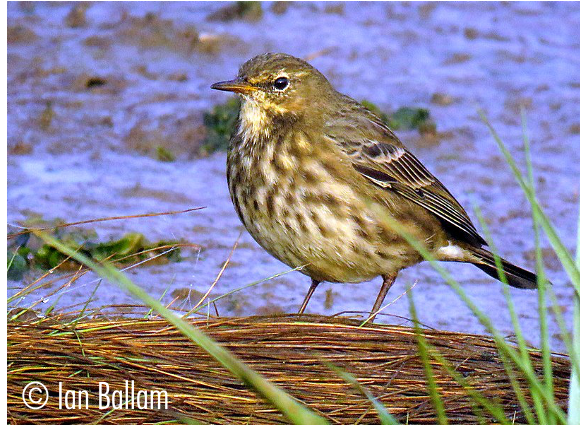
Coracias garrulus
Vagrant
1 on the 8th June 1967 on telephone wires near Slepe Farm, on the edge of Hartland Moor (B Pickess, B Teagle, Mrs Teagle). It remained in the area for half-an-hour then flew in the Rempstone direction. Bryan P (having been reprimanded by Mrs Teagle for his language) rushed off to spread the news.
Corvus frugilegus
Resident
Easily seen in rural areas of the harbour with Rookery’s occurring at Lytchett Bay, Swineham, Corfe and Whitecliff. Large winter roosts of up to 2000 aren’t uncommon.
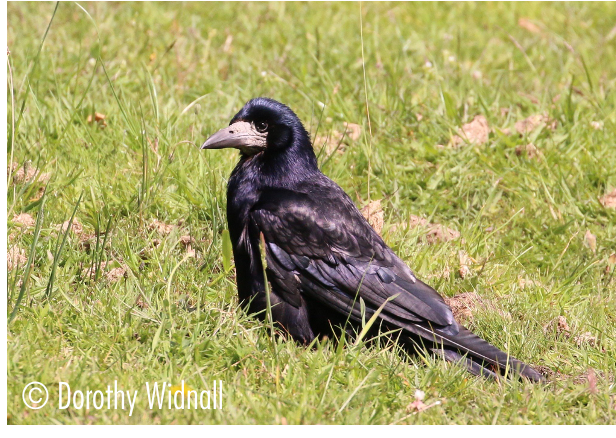
Sturnus roseus
Vagrant
An annual but very scarce migrant to Dorset, mainly in autumn, but it remains an extreme vagrant to the Harbour with only 4 records. Checking post breeding flock of Common Starling from August to October is your best cahnce of tracking down a Rose-coloured Starling in Poole Harbour.
A juvenile moulting into adult plumage from Oct 1983 to early March 1984 in a Poole Garden was published in DBR 1984 as “submitted to British Birds” but the record never appeared in their reports?
A juvenile on the 17th Oct 1995 near the Priory in Wareham (N.Gartshore, RJ Taylor)
A juvenile on 10th Sept 2008 at Lytchett Bay (S Robson) photo
A juvenile on 3rd – 4th Oct 2010 at Greenlands Farm, Studland (SW Smith et al) photo
1 adult Morden Bog on 1st Jun 2018 (AJ Brown).
1 Adult in Wareham on 10th Jun 2020 (Sheila Morrissey).
1 juv briefly on 16th Sept 2021 at Middlebere (Brian and Hannah Martin)
Sterna dougallii
Scarce Summer Visitor & Passage Migrant
Pairs summered on Brownsea Lagoon in the late 60’s and between 1978-91 and again in 1995, 1996 and 1999. Display was noted on several occasions but only in 1985 did a pair actually breed. Sadly the nest was deserted. After increasing records during 2007 and 2008, a pair bred in 2009, making this the first successful pair to raise young in the county since 1988.
Records since 2000. At Brownsea Lagoon unless otherwise stated.
2000 – singles on 4 dates in June and July.
2001 – seen on 10 dates, max 3 on 17th June.
2002 – seen on 6 dates, max 2 on 29th May.
2003 – seen on 16 dates, max 2. One had been ringed at Rockabill, Ireland.
2004 – Between 1 -5 adults 9th May to 9th Aug, one ringed at Rockabill, Ireland in 1999. Nest scraping and display noted. 1 at Branksome Chine on 23rd
Aug.
2005 – seen on 15 dates, max 2 on 18th Jul. 1 at South Haven, Studland on 14th Jun.
2006 – seen on 2 dates, max 2 on 24th Jun. 1 at Poole Quay on 25th Jun.
2007 – seen regularly between 12th May and 15th Jul, max 2. 1 in Poole Bay on 16th Jul.
2008 – seen regularly between 13th Jun and 23rd Aug, max 4 in late Jul. 1 at Branksome Chine on 4th May. 1 in Studland Bay on 29th Apr.
2009 – a pair raised 1 chick.
2010 – seen on 13 dates, max 2.
2011 – seen regularly 22nd May to 9th Jul, max 3 on 23rd May.
2012 – seen on 2 dates, max 3 on 20th May.
2013 – seen regularly between 19th May and 20th Jul, max 3 on 16th June. Display noted.
2014 – no records.
2015 – seen on 3 dates, max 3 on 10th May.
2016
Brownsea Island Singles on 22nd Jun and 4th Aug.
2017
Brownsea Island 1-2 on 2nd-9th Jul, with 3 on 12th & 19th Jul.
2018
Brownsea Island 2 on 14th-18th Jul.
2020
Brownsea Lagoon 1 on 23rd May, 2 on 24th May
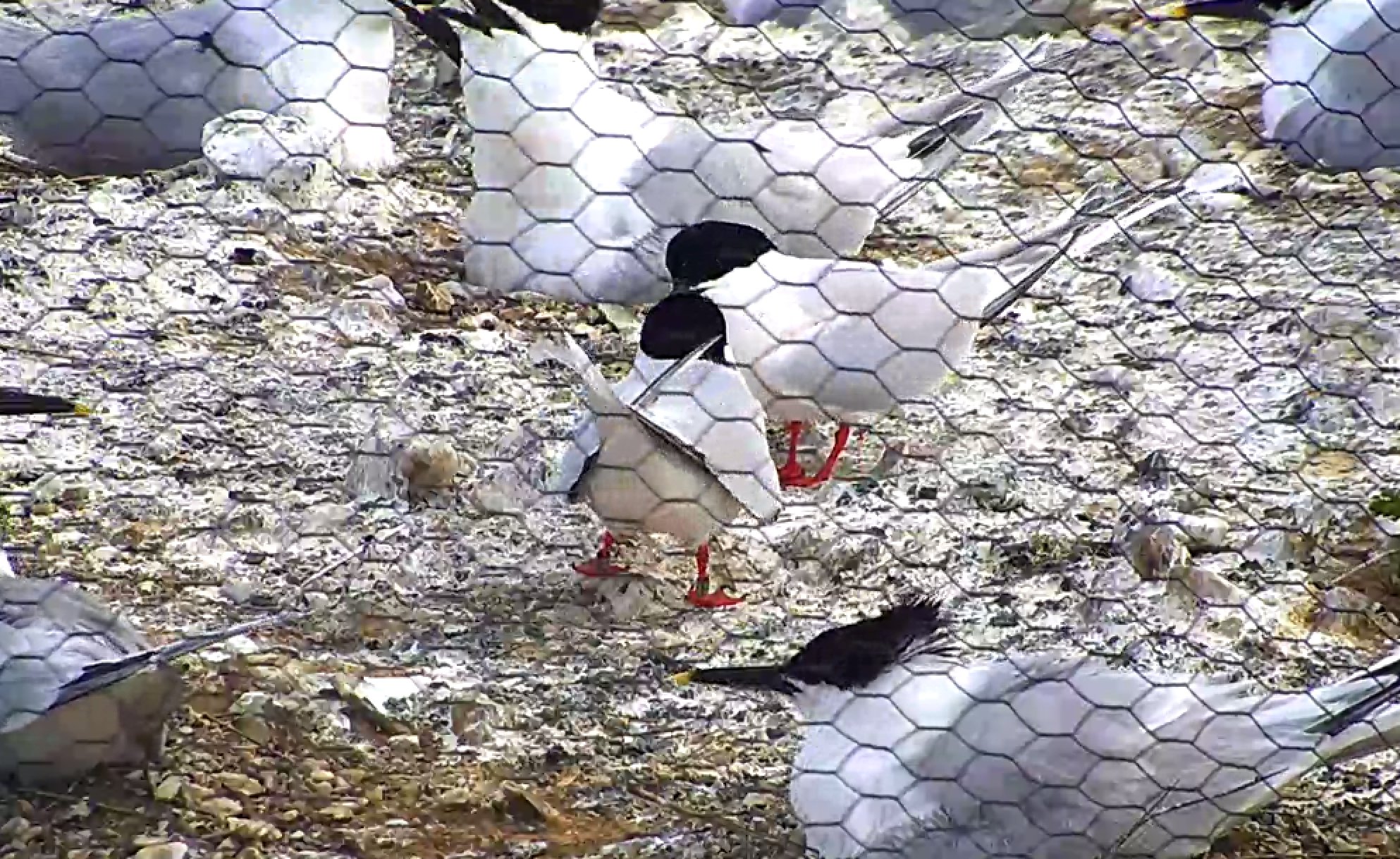
© 2025 Birds of Poole Harbour Registered Charity No. 1152615
